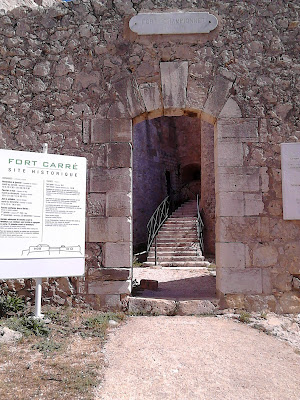This display shows how amphorae would have been stored in a trade ship.
I think that everything in this very tiny but beautiful museum was found in the area of Antibes, mostly from sunken ships offshore. Perhaps I was told this by someone who spoke in English to me on a previous visit?
This year there was a special exhibit on display "de Terre et de Couleurs" which consisted of artefacts and small watercolour paintings of coastal points of interest in the region. Again, there were no translations of any didactics, so my visit entailed a lot of guesswork.
Since I have been immersed in a ceramic workshop this past year (and looking forward to it starting up again soon, after a summer break) I was taking a closer look at the ceramic artefacts.
The border design and bird's head drawing on this sherd really remind me of medieval manuscript designs.
The rabbit design on this sherd also reminds me of something one would find in a medieval manuscript. Once again, my main complaint about the museum is that there are no translations of the didactics -- for someone like me, reading didactics at a museum is a pleasure. My curiosity about things loves to be sated!
























